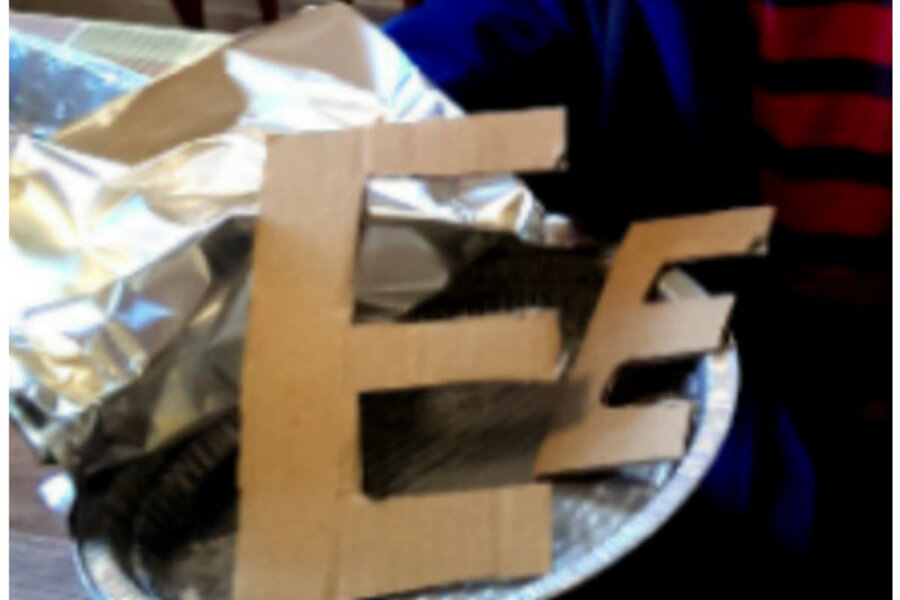April Fools' Day: Good-natured jokes win over mean pranks
Loading...
April Fools’ Day may be packed with more teachable moments than any other date, especially when some kids have begun to view it as a day of socially acceptable vengeance.
Today is the day my youngest son, now in fifth grade, comes home crying each and every year since he started public school.
It’s usually the day I get calls from neighbors, crossing guards, and other moms either apologizing or telling me what they saw what happened to my son Quin on his way to, or from, school on his bike.
Quin is a goofy, gullible soul, who does not really understand the point of why people would be mean-spirited on a single day, let alone on a daily basis.
However, he has come to know that one day a year he is both the ultimate target and is socially unfettered to channel all that pent-up stress into acts of unkindness and thus be what he considers “one of the cool kids” – April Fools’ Day.
While our other three sons never really got into the swing of April Fools’ Day, last year Quin began to plan and prep for it like a military campaign.
I suspect that’s because adults have essentially let kids know that this is the day of the year when it’s socially acceptable to be tricky and generally do rotten things to others for the sake of a laugh. Unfortunately, many kids often perceive “tricky” to be mean.
Quin has been bullied at school for the past two years with little relief coming from authority figures in the administration.
Therefore, it came to my attention last year on this date that my youngest sees April Fools’ Day not as harmless fun, but as a socially sanctioned, adult-approved, and even celebrated day of “ultimate revenge.”
“Well all year kids at school focus on me for all the pranks,” Quin explained. “So I just want to be prepared for once.”
Prepared?
“OK, so I want to get them back,” Quin said, hanging his head and starting to cry. “It’s OK. It’s April Fools’ Day.”
As I emptied his bag of honey, finger paints, water balloons, and a host of other items that I envisioned lined up on the vice principal’s desk later in the day, we had a long talk about the origins of both his feelings and this holiday.
I must take my fair share of responsibility for this situation, since I am fond of telling my sons when the get bullied, “The first man to raise a fist is the one who’s run out of ideas.”
Clever boy that he is, Quin was a bit too full of ideas, and as a mom, I needed to be more specific with my angry, creative child.
So back then, we turned to history to learn the truth about this day and found that April 1 can be traced to several possible origins.
The one we loosely accept is that it’s a way of blowing off pent-up energy from a long winter on what was once celebrated as the first day of the new year on the pagan calendar.
According to the Museum of Hoaxes, the first recorded April Fools Day prank is documented in a 1561 poem by Flemish writer Eduard de Dene, Boese.
Museum of Hoaxes curator Alex Boese writes about Mr. de Dene sending his servant on multiple false errands for the sake of a “traditional” prank on April 1 and so the term “a fool’s errand” was coined.
In 1582, Pope Gregory XIII issued a papal bull decreeing a new standard calendar for Christian Europe, according to the Museum of Hoaxes. Before the 15th century, Europe’s nations and city states operated using the Julian calendar. The Gregorian calendar moved the date of the new year from April 1 to January 1, among other changes.
Because news traveled slowly in those days, news of the change didn’t make it to the countryside where many continued to celebrate the new year in April, and so were called “April Fools” by those who knew of the calendar change. The holiday and references to an “April Fools' Day” didn’t begin to appear for many years later.
That’s the alleged history, but not the true origin of some of the mean-spirited pranking, punking, and hoaxes we see today.
While kids often learn cruelty by watching other kids, it is adults’ emphasis and spin on this day that wields the greatest influence.
My youngest needs to work on managing his responses to bullies, but parents might want to take a moment today to ask their children what they did to others today and why.
Society might want to consider dialing back the mean on this day, and every day.
Quin sulked, saying he still wanted to “get” the bullies in some way. His energy needed positive direction.
We settled on something clever and funny instead of cruel by cutting out the letter ‘E’ in cardboard and placing a few in a tinfoil covered plate.
Quin will offer kids from his class – bullies and friends alike – some “Brown Es.”
“Oh that’s hilarious,” Quin crowed as he cut out the letters last night. “This is so much better than what I had planned. It’s actually funny.”
I have no doubt that many mean things will be done to my son today in the name of humor.
When he gets home, I will console him with the fact that he took the higher, wittier path today.
Then he can pull his “Brown Es” joke on his older brothers before putting goggly eyes on all the food in the fridge to make his Papa roll his eyes and moan, “Will this day ever end?”






